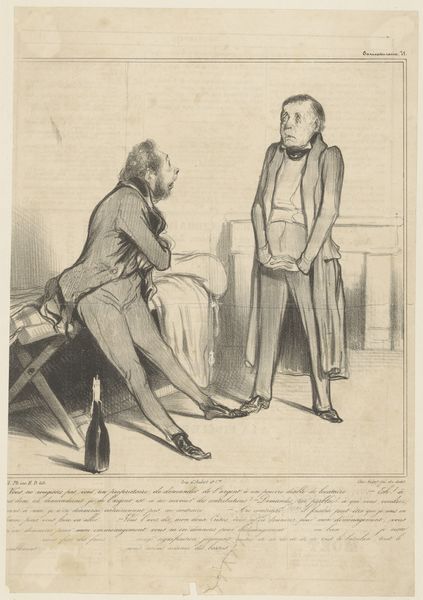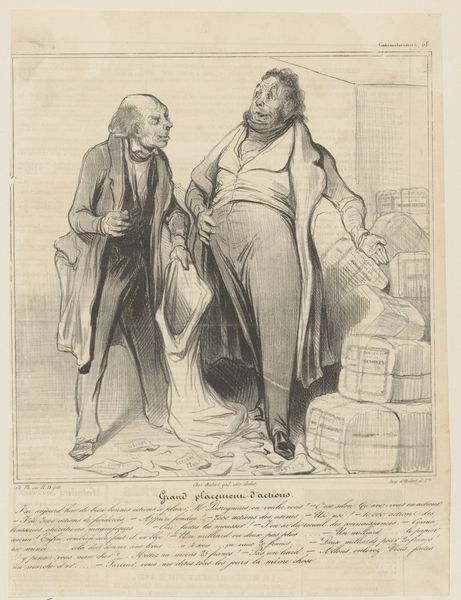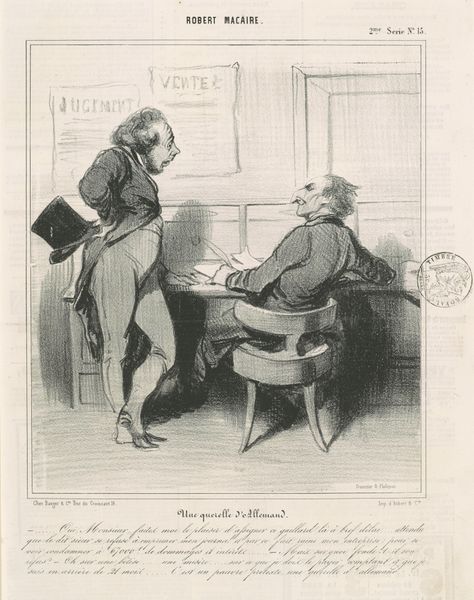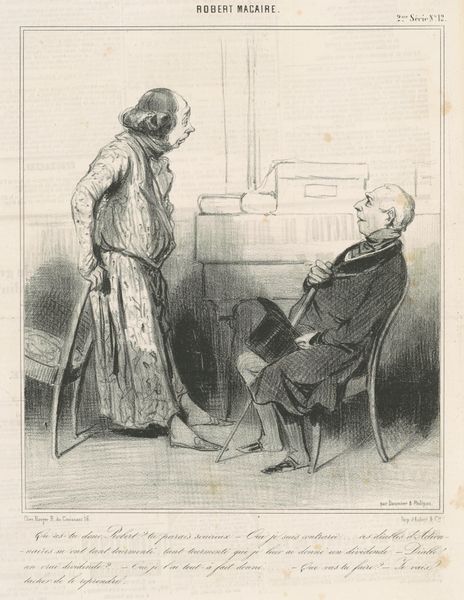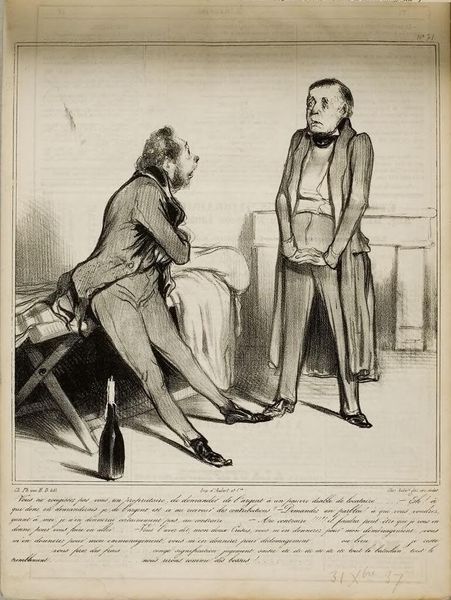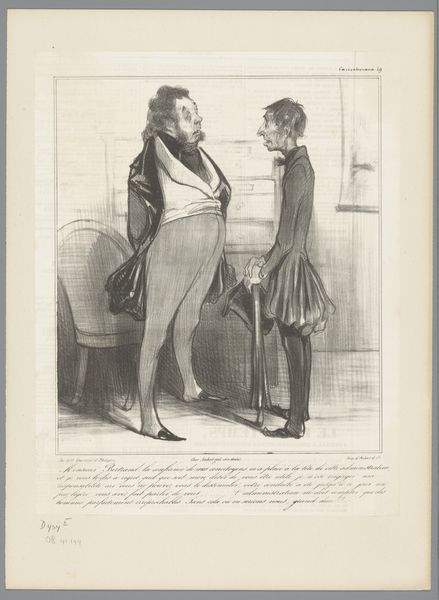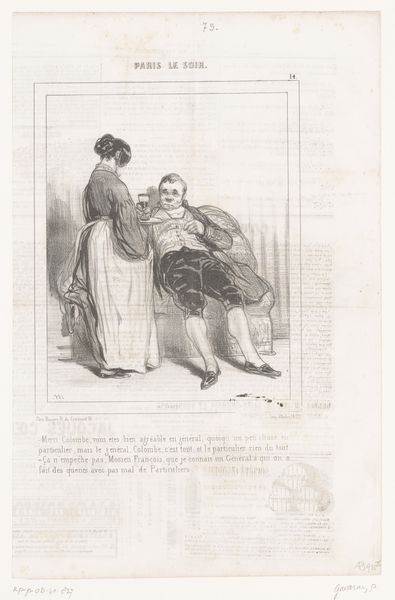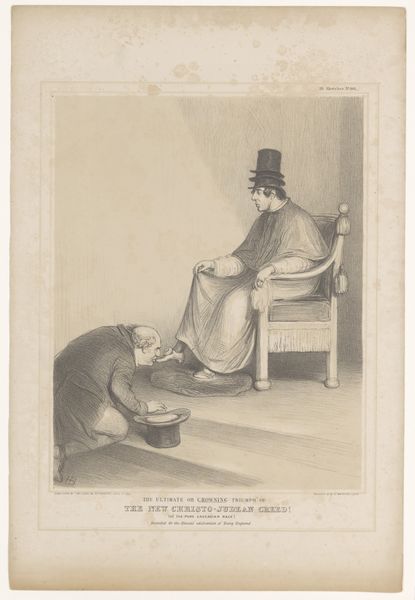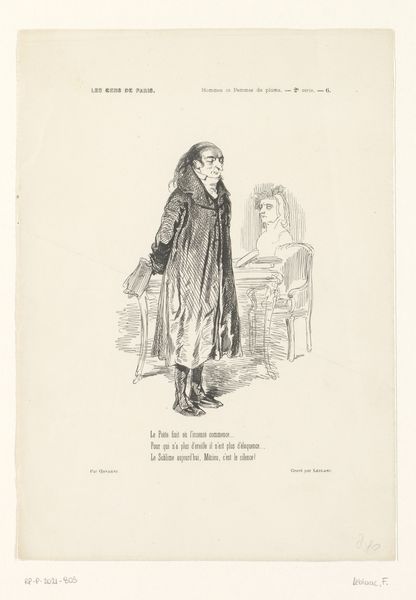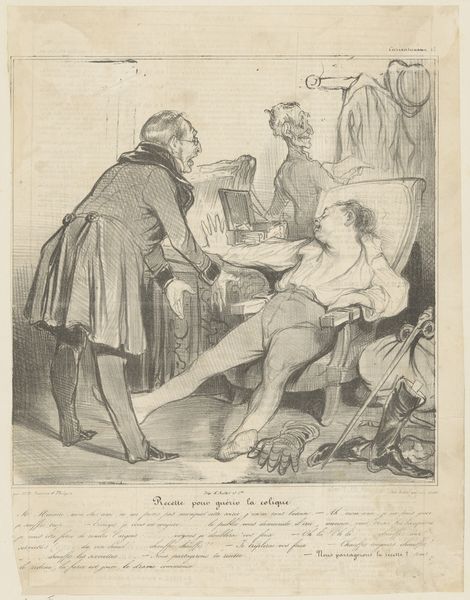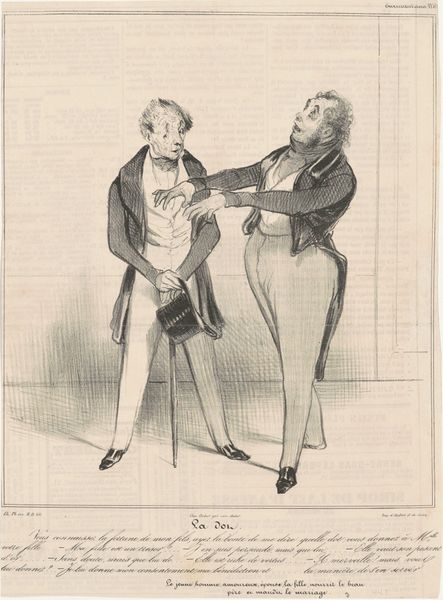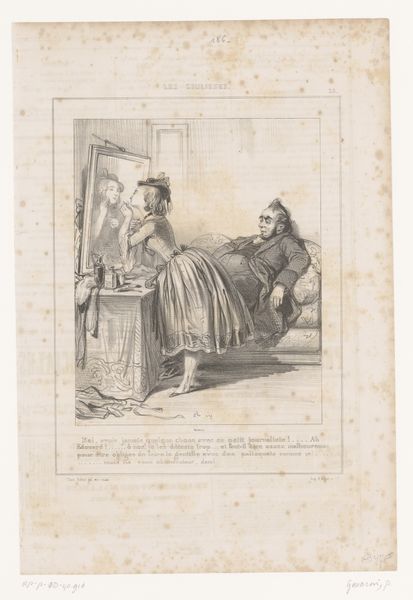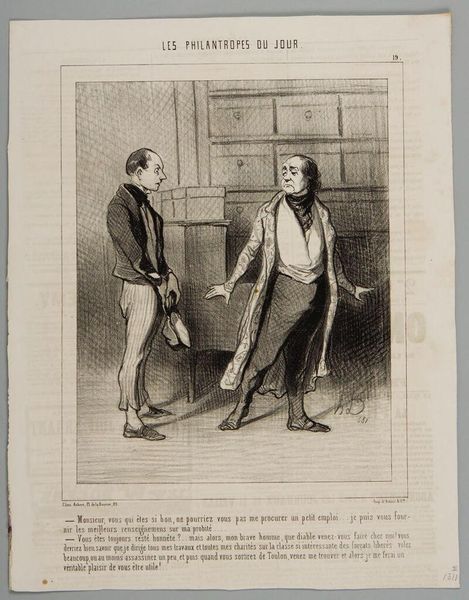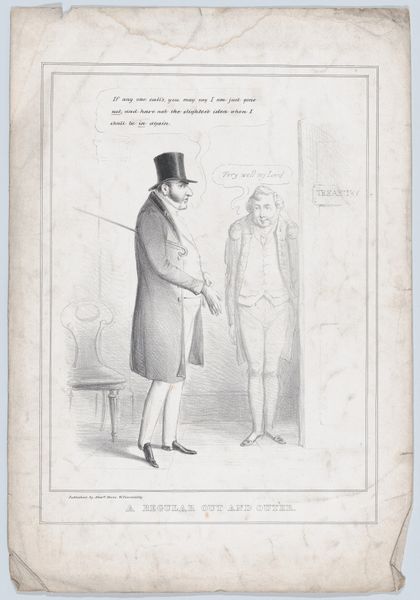
lithograph, print
#
lithograph
# print
#
caricature
#
romanticism
#
genre-painting
#
realism
Dimensions: height 286 mm, width 243 mm
Copyright: Rijks Museum: Open Domain
Curator: The lithograph, "Oogarts Robert Macaire probeert blinde man te houden als klant" from 1837 by Honoré Daumier… it’s a cynical portrayal, but technically, it's quite simple, relying on lines. Editor: The simplicity, especially the bare background, it feels so intentional. What do you make of how the artist chose to create this piece and what does it mean? Curator: With lithography, it is important to note it enabled mass production and a wider distribution of images like these, democratizing art to some degree. It suggests Daumier wanted his work seen by as many people as possible. What do you see here? Editor: Well, the “doctor’s” posture seems very theatrical and affected, versus the hunched-over blind man, and it gives the image an incredible narrative. Curator: Exactly, think about Daumier’s access to, and the materials he likely consumed while creating this art for and of the rising French middle class. Robert Macaire became an icon of bourgeois society after a theater production by Benjamin Antier and this reference to such production puts his artwork into the scope of material analysis through references to labor and social class. Is the character more real or is he simply playing the part? Editor: It's a clever observation about the "labor" put on by this Macaire figure! I hadn’t considered how relevant theatricality is here. Curator: These prints had a cost, and by purchasing this artwork Daumier’s patrons fueled a system and validated the ideas it contained. Do you have a new reading of the image after these elements of reflection? Editor: It highlights the complex systems through which art is produced, viewed and how deeply they’re tied to society, even back then. Curator: Right, by tracing back these origins we might gain a greater critical consciousness to the consumption habits behind art viewing even today.
Comments
No comments
Be the first to comment and join the conversation on the ultimate creative platform.
